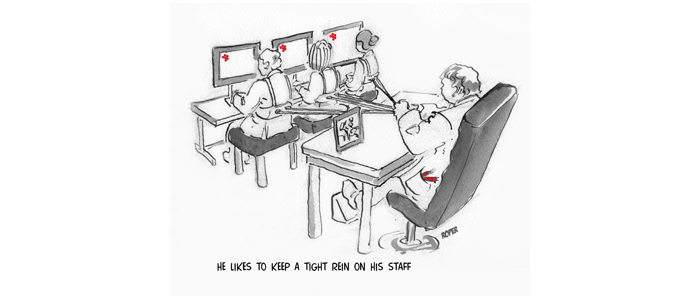“Why does everything end up on my desk?” “Nobody shows any initiative – it’s like managing a bunch of children.”
Are these familiar thoughts? Do you find people don’t understand you? Are you frustrated that they don’t do what you want and what your business needs?
What causes your organisation either to be a great one, or one in which conflict, politics and finger-pointing thrive? Like many leaders you may regard this as a bit of a mystery – one which gets solved only by luck (recruiting the right people) or effort (constant troubleshooting).
It’s no mystery though. Most people problems arise from a very common misunderstanding about how organisations work.
A natural tendency in leading and managing other people is to focus on them as individuals. They seem to be the source of problems and we may even blame them for the trouble they ‘cause’. People can change after being warned or given coaching to improve their behaviour. But managing people this way is like playing Whack a Mole: you bash down one, only to have another and then another pop up elsewhere. You never win.
This perspective causes leaders great stress, because everything seems to come back to their ability to diagnose and fix people in their organisation, one by one. Here’s an alternative view of organisations that may give you a handle on how to manage yours:
The beehive
There is a point, when human beings come together, that they become an organisation. People in groups behave in the way they do because they work together – they are all part of one organism, like bees in a hive. You, its leader, are part of the organism too; you’re a reflection of it and it of you. It’s impossible to fix any one individual, or yourself, without causing a knock-on effect elsewhere in the hive.
Yet how often do we do exactly this? In human organisations, from families to businesses, we talk about ‘the problem child’ or ‘the disruptive team member’. If we could only fix them, everything would be hunky dory – or so we think.
Learn to spot the written and unwritten rules by which your particular organism operates, and focus on adjusting these to deliver the behaviour you are looking for. Individuals will actively start to regulate themselves, need less of your hands-on input, and lighten your load. You will increasingly be able to lead the organisation by standing back and applying little tweaks and adjustments as needed.
Thinking in terms of the team, the group or the organisation has to be learned. It’s not about you or them. It’s not you versus other people, though it sometimes feels that way. Get your head around this mindset and you will often be surprised by the speed and impact of change for the better.
Want to read more of the same? Then click on the graphic below to receive a monthly digest direct to your inbox…

